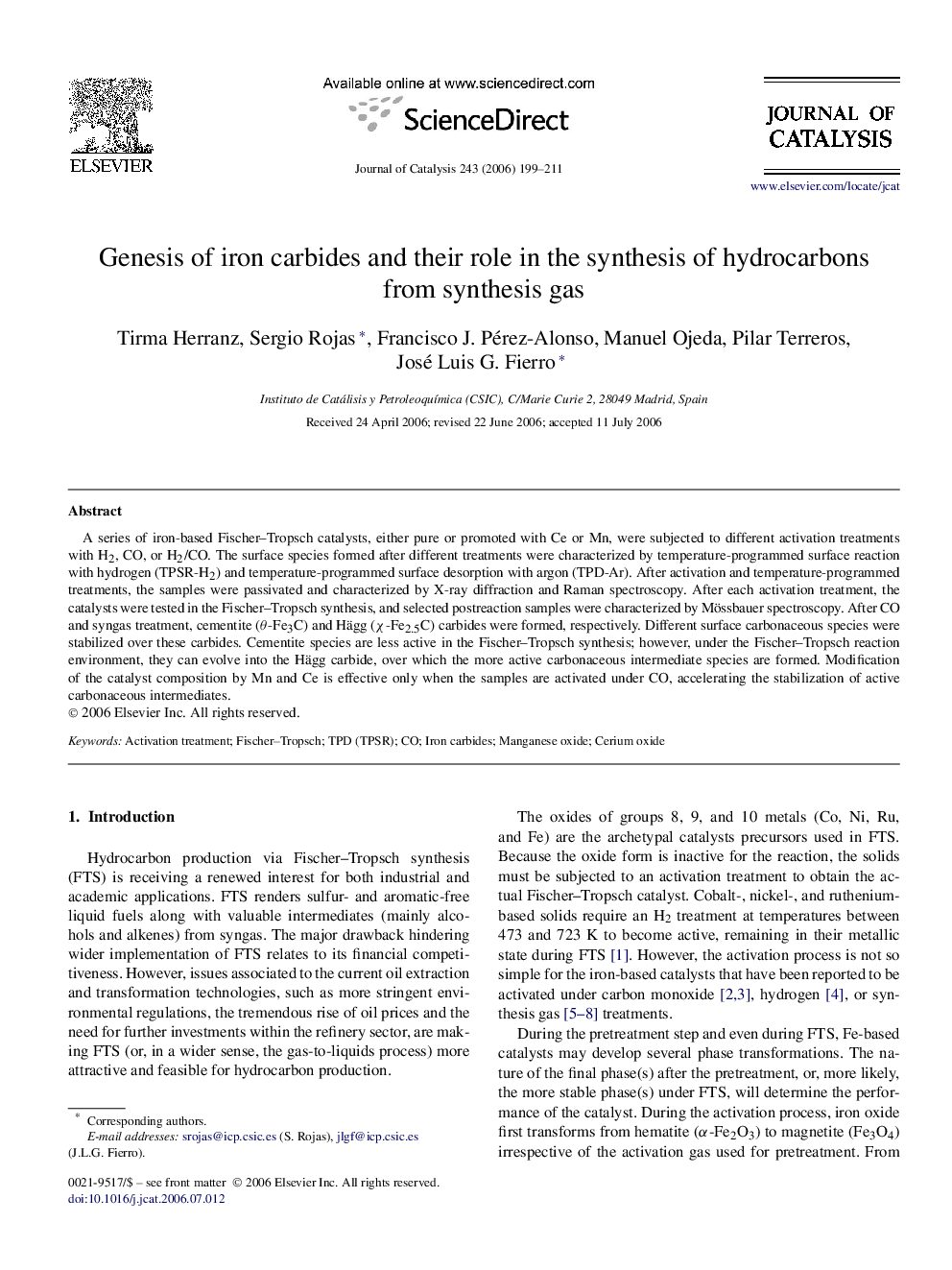| Article ID | Journal | Published Year | Pages | File Type |
|---|---|---|---|---|
| 63452 | Journal of Catalysis | 2006 | 13 Pages |
A series of iron-based Fischer–Tropsch catalysts, either pure or promoted with Ce or Mn, were subjected to different activation treatments with H2, CO, or H2/CO. The surface species formed after different treatments were characterized by temperature-programmed surface reaction with hydrogen (TPSR-H2) and temperature-programmed surface desorption with argon (TPD-Ar). After activation and temperature-programmed treatments, the samples were passivated and characterized by X-ray diffraction and Raman spectroscopy. After each activation treatment, the catalysts were tested in the Fischer–Tropsch synthesis, and selected postreaction samples were characterized by Mössbauer spectroscopy. After CO and syngas treatment, cementite (θ-Fe3C) and Hägg (χ-Fe2.5C) carbides were formed, respectively. Different surface carbonaceous species were stabilized over these carbides. Cementite species are less active in the Fischer–Tropsch synthesis; however, under the Fischer–Tropsch reaction environment, they can evolve into the Hägg carbide, over which the more active carbonaceous intermediate species are formed. Modification of the catalyst composition by Mn and Ce is effective only when the samples are activated under CO, accelerating the stabilization of active carbonaceous intermediates.
